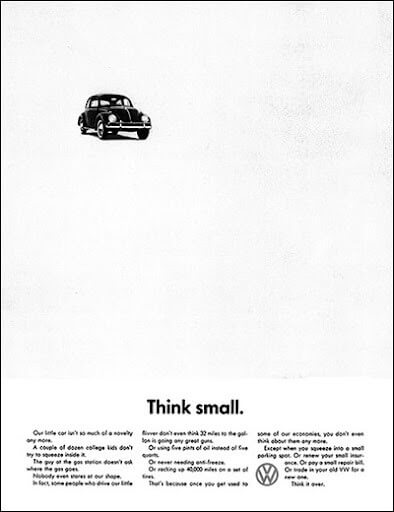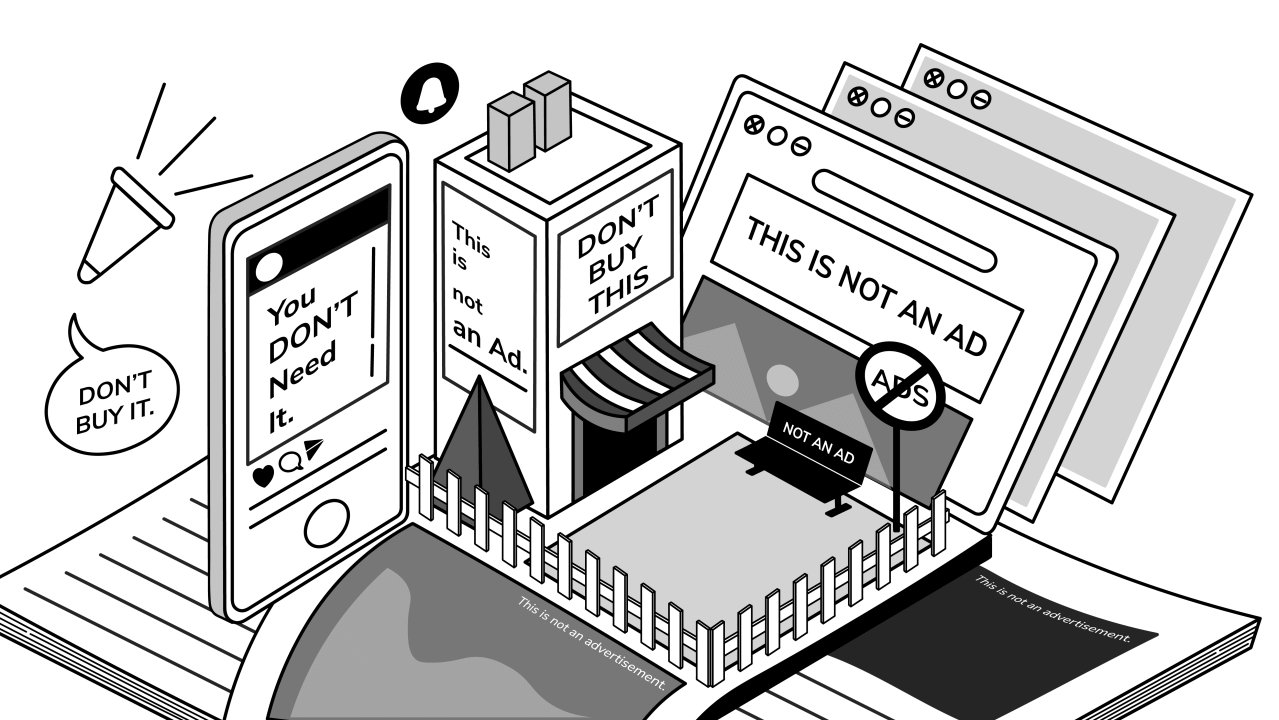Any marketing professional worth their salt will tell you that creating a favourable perception of a brand and its product/service is at the heart of all marketing and advertising endeavours. It is the way to separate one’s offering from one’s rivals, pointing out the pros of the former and the cons of the latter. Yet, both buzz and data suggest something quite contradictory to this notion. People are getting tired of advertisements – especially the newer generations, who are bombarded by digital marketing efforts everywhere they go. In the UK, for example, 55% of consumers cite apathy towards advertising content, and only 11% actually admit to enjoying ads.
For brands and marketers alike, this is alarming news.
Is the end near for traditional advertising and marketing?
Well, yes and no.
To a certain extent, the word on the street has always been clear: people aren’t all that thrilled about being advertised to or being told to buy things. However, in today’s world, ads are not restricted to a few minutes of television or some print space in newspapers and magazines. Marketing efforts are now ubiquitous – on every platform in every corner of the internet. From social media to on-demand video platforms, ads have become the mainstay of user experience. HubSpot Research finds that 91% of people think ads are more intrusive now compared to two or three years ago. Thus, what might have manifested as indifference back in the day, is today surfacing as dislike and as fatigue. Nowhere is this more evident than in the rampant use and popularity of ad blockers.
People’s growing distaste for ads and the perception of modern marketing efforts as intrusive and disruptive is changing the “familiar script of marketing.” The game is different now – no longer hinged on the prescriptions of traditional marketing wisdom. The constant flood of positive selling tactics don’t have the impact they are intended to. Plus, an oversaturated market overwhelmed with competition makes it difficult for brands to stand out, leading to the phenomenon of “banner blindness,” which often makes digital ads “invisible” to web users.
Are We Being Defeatist?
As marketers, it seems blasphemous to acknowledge the very premise that our target audience does not like what we are putting so much of our effort into.
Doesn’t this render our very work meaningless?
Quite the opposite, actually. It brings the significance of marketing and advertising work into sharper relief.
If we accept as a premise that human psychology is fundamentally set up to resist our efforts, the quality of what we’re putting out becomes that much more important. In fact, working on the flawed assumption that advertising is liked and well-received can lead to the creation of sub-par, ineffective ads. Research done by the Ehrenberg Bass Institute shows that on average, a consumer could recall and correctly attribute only 16% of the TV ads they had been exposed to the previous day. This makes sense, since even the most creative ad is received as a fleeting piece of content, viewed with divided attention.
In any marketing endeavour, success increases with increased alignment between market demands/expectations and what is being delivered. Thus, embracing the idea that people dislike advertising allows us to create better ads that grab and hold attention more effectively.
Say Hello to Anti-Marketing.
Anti-marketing is an alternative way of marketing and/or advertising designed to defy conventional norms. In direct contradiction to what marketers hold dearest,
anti-marketing
Anti-marketing – as rather evident from the name – does not rely on positive messaging. Drafted as an antidote to consumers’ apathy to straightforward messaging – which relies on upselling the strong points of the brand and its offerings – anti-marketing does not employ a singular strategy. Instead, it leverages multiple approaches, with a focus on humour and self-awareness, to connect with people and “pull customers in.” Often, such campaigns tell consumers not to buy the product being marketed, in a way that actually makes them want it. Poking fun at the very concept of advertising and marketing is another route used by some brands – acknowledging that they understand and relate to the consumer’s general disdain for hard-selling.
If we were to distil the core components of anti-marketing or anti-advertising, they would comprise a permutation of honesty, relatability, smart, self-deprecation, some amount of reverse psychology. And the result of this cocktail is meant to have a witty appeal.
Of course, at the end of the day, “anti-marketing,” too, is a form of marketing. According to Kapil Ojha, Creative Group Director, DDB Mudra, the concept relies heavily on confidence and is the bravest form of advertising. “To explain what anti-advertising is, perhaps it is better to start by saying what it is NOT. Anti-advertising is anything but humble, soft, or regular. It is not praising the product … it is like a brand roasting itself.”
Volkswagen Calls It Like It Is: The OG Anti-Ad
The first major anti-advertisement campaign can be tracked all the way back to 1959 when Volkswagen created the “Think Small” series of ads for the Beetle car. At a time when other car companies focused heavily on hard-selling their cars and its USPs, Volkswagen turned the standard principles of advertising on its head with its minimalist, funny, and self-deprecating honest messaging. When it was launched, the ad world did not put much stock in this strategy, but the public reaction to it was unprecedented. The ad took people by storm, and the shooting sales figures for the Beetle was evidence of its success.

This ad is the perfect example of leveraging blatant honesty, a no-frills and no-hard-selling approach, and a healthy amount of self-mockery to make a positive, appealing impression on the audience. Moreover, the copy subtly drives home the advantages of the car without any overt messaging, turning the perceived flaw of “smallness” into a covetable feature. Consider the closing lines: “Except when you squeeze into a tight parking spot. Or review your small insurance. Or pay a small repair bill. Or trade in your old VW for a new one. Think it over.”
Oatly Invites Us to Laugh with and at It
In 2016, Oatly, a Swedish oat-milk brand, for example, adopted an outdoor-only advertising strategy that relied on self-awareness. Their ad posters didn’t push the product through fancy copies, and instead focused on clean and clever messaging – poking fun at themselves, the marketing industry, and even the audience.

In the way it leverages humour, Oatly breaks the fourth wall and allows the viewer to feel that they are “in on a secret,” a part of the inside joke. This respect for the audience’s intelligence is a breath of fresh air in a market hyper-focused on exploiting human psychology to grab a sale. One copy reads: “We made this ad look like street art so you would like it better than if it was just an ad.” This, combined with the campaign’s overnight guerrilla-style execution, adds a layer to the cleverness of the headline, by highlighting the “commercialization of street art culture” while also participating in it.
Zlade Ballistic Advertises without an Ad
Closer to home, Zlade Ballistic has creatively used anti-marketing to advertise its men’s grooming trimmer. It put out a video that, on the face of it, is simply a conversation with Zlade’s new brand ambassador – Milind Soman. We see Soman in his vanity van as he brainstorms potential ad ideas with his manager.
The discussion about the making of the ad itself becomes the advertisement for the product – its key features covered in the discussion, as the manager explains to Soman that the trimmer “makes it smooth” and “without a cut”. At the same time, this honest behind-the-scenes footage format is used to incorporate humour and ridicule outdated industry practices. For example, Soman is puzzled at the euphemistic term “manscaping.” He calls out the absurd prudishness of ads attempting to avoid the term “pubic hair” and vetoes trite and overly conservative copy ideas. “Let’s just be direct,” he says, a nod to the idea of being straight with customers instead of plying them with tactics.
Finally, this ad-but-not-an-ad turns to the audience for creative suggestions for making an “actual” ad, offering the incentive of a “special Zlade Ballistic gift hamper” to the winning idea. This creates a level of engagement with the audience that a conventional non-interactive ad simply cannot match. Zlade brilliantly manages to introduce its product, highlight its features, spoof conventional ad tropes used by its competitors, and connect with consumers — all without ever attempting to sell the product.
Is Anti-Marketing For You?
At the heart of effective anti-marketing lies understanding the assumptions that people have about an industry, a brand, or advertising in general – and then challenging them. The idea is to show consumers that your company knows what they expect and is smart enough to subvert that expectation. Anti-marketing efforts are cheeky, self-aware, and spoof-like, while also respecting the time and intellect of the audience.
So, can this work for your brand?
The answer is not a simple yes or no. Whether you can successfully leverage an anti-marketing approach will depend on how it fits into your overall brand narrative. For example, if a brand has an established serious image, putting out a tongue-in-cheek message may come across as forced, awkward, or trying too hard – unless it’s conceptualized and executed with extreme care. There’s also the inherent risk of miscommunication to consider.
Another thing to keep in mind is that any disruptive strategy progressively loses its novelty as more and more people turn to it. That is to say, it might be safer to wait until the public gets more accustomed to this strategy, but it will also become less effective by then. Time is of the essence, and the brands that will benefit from anti-marketing most will be the early adopters.
For now, anti-marketing remains a high-risk, high-reward proposition. It’s tricky to get it right, but if you do, it is an excellent method to stand out in the crowd. Our advice is to consider your current brand image and your target audience, and proceed with caution. And, when in doubt — always turn to experts who know the rules of the marketing game well enough, so they can choose the right ones to break.

